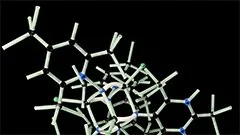Molecular Biology: mRNA Translation
The process of protein synthesis in eukaryotic cells is complex and involves three main stages, namely transcription, translation, and post-translational modification. This document focuses on the second stage: translation, which is the synthesis of a protein from an RNA copy of a gene known as messenger RNA (mRNA).
Introduction
In this course, we will explore the intricate process of mRNA translation in eukaryotic cells. We will delve into the details of how the genetic information encoded in DNA is transferred to mRNA molecules, and then translated into protein sequences through a process mediated by ribosomes and transfer RNAs (tRNAs).
Transcription: From DNA to mRNA
Transcription is the first step in gene expression, during which the information from a DNA sequence is copied onto an RNA molecule known as messenger RNA (mRNA). The mRNA serves as a template for protein synthesis during translation. This process takes place in the nucleus of eukaryotic cells.
Key Players and Steps
- RNA polymerase II: An enzyme responsible for transcribing DNA into mRNA. It moves along the DNA molecule, reading the genetic code and synthesizing a complementary RNA strand.
- Promoter region: A specific sequence of DNA where transcription initiation occurs. The binding of transcription factors triggers the recruitment of RNA polymerase II to initiate transcription.
- Pre-mRNA processing: Pre-mRNA undergoes several modifications before being exported to the cytoplasm for translation. These include capping, splicing, and polyadenylation.
Translation: From mRNA to Protein
Translation is the second stage of gene expression, during which the genetic information encoded in an mRNA molecule is translated into a protein sequence. This process takes place in the cytoplasm of eukaryotic cells, mediated by ribosomes and transfer RNAs (tRNAs).
Key Players and Steps
- Ribosomes: Complexes composed of ribosomal RNA (rRNA) and proteins that serve as the site where protein synthesis occurs. They bind to the mRNA template and move along it during translation.
- Transfer RNAs (tRNAs): Small RNA molecules that carry amino acids and read the genetic code in the mRNA template. Each tRNA is specific to a particular codon, a sequence of three nucleotides that codes for a specific amino acid.
- Initiation: The process by which ribosomes bind to the mRNA template at the start codon (AUG) and begin protein synthesis. Initiation factors play a crucial role in this process.
- Elongation: The repeated addition of amino acids to the growing polypeptide chain, mediated by tRNAs and ribosomes moving along the mRNA template. This process is driven by elongation factors and energy from ATP hydrolysis.
- Termination: The termination of protein synthesis when the ribosome encounters a stop codon (UAA, UAG, or UGA) in the mRNA template. Release factors facilitate the dissociation of the completed polypeptide chain from the ribosome.
- Quality Control and Folding: After translation, newly synthesized proteins undergo several modifications and folding to achieve their active conformation. This process is essential for proper protein function.
Regulation of Translation
Translation can be regulated at multiple levels, including initiation, elongation, and termination, as well as mRNA stability and localization. These regulatory mechanisms allow cells to respond quickly to various environmental stimuli and maintain homeostasis.
Key Mechanisms
- Initiation regulation: Control of the binding of ribosomes to the mRNA template at the start codon. This can be achieved through the phosphorylation or dephosphorylation of initiation factors, as well as by various RNA-binding proteins.
- Elongation regulation: Modulation of the rate at which tRNAs add amino acids to the growing polypeptide chain. This can be achieved through changes in the activity of elongation factors or modifications to tRNAs themselves.
- Termination regulation: Regulation of protein synthesis termination by controlling the efficiency of release factors and the recognition of stop codons.
- mRNA stability and localization: Control of mRNA degradation and transport within the cell, allowing for spatial and temporal regulation of gene expression.
Conclusion
Understanding the process of mRNA translation is crucial to our understanding of protein synthesis in eukaryotic cells. By exploring the key players and steps involved in this complex process, as well as the various regulatory mechanisms that modulate it, we gain valuable insights into cellular function and how cells respond to their environment.
MCQ: Test your knowledge!
Do you think you know everything about this course? Don't fall into the traps, train with MCQs! eBiologie has hundreds of questions to help you master this subject.
These courses might interest you
Create a free account to receive courses, MCQs, and advice to succeed in your studies!
eBiologie offers several eBooks containing MCQ series (5 booklets available free for each subscriber).




